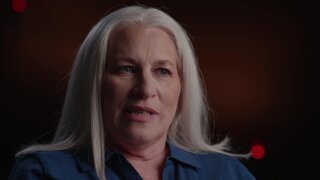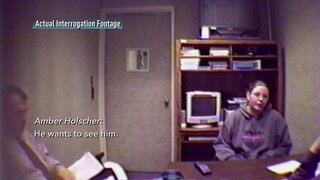Create a free profile to get unlimited access to exclusive videos, breaking news, sweepstakes, and more!
A Man's Thoughtless Question Leads Police To Identify Him As A Murderer
A cash-strapped restaurant owner, Guy Sileo, cooked up a deadly plan to pay off his debts.
In the Philadelphia suburb of Lower Merion Township, Pennsylvania, 31-year-old Jim Webb was a rising star in the culinary world.
After proving himself as a chef in other people’s kitchens, Webb, who was married with two children, and his business partner, Guy Sileo, 33, took over the 297-year-old General Wayne Inn restaurant in June 1995.
It was a risky and expensive business endeavor, but business at the historic inn was brisk. Then, about 18 months later, tragedy struck.
On the morning of December 27, 1996, Webb was found by restaurant staff on the floor of his third-floor office. At first glance it appeared that he’d fallen and hit his head, investigators told “In Ice Cold Blood,” a show hosted by Ice-T on Oxygen.
Detectives discovered that Webb had been shot in the back of the head. “We were looking at a homicide, not an accident,” John Stillwagon, a retired detective with the Lower Merion Township Police Department, told producers.
“The only people in the world that knew that Jim was shot were the several detectives in the room, and the person who shot him,” he said. The shooting information was kept secret.
Police processed the scene and found a .25-caliber shell casing. They ruled out the possibility of a robbery gone wrong by the presence of valuables.
Investigators interviewed Sileo, who was married but romantically involved with a restaurant line cook, Felicia. Authorities determined that they were the last people to see Webb alive on the night of December 26.
Webb had planned to join them at a nearby establishment for a drink, but never arrived. Between Felicia and the bar staff, Sileo had an alibi for his whereabouts at the time Webb died.
When detectives interviewed Webb’s wife, Robin, she told them that they were stretched to the max financially. Despite being busy, the old restaurant was a money pit that needed constant costly repairs.
Robin told investigators that Webb’s life insurance policy was designed to pay off Small Business Administration loans, so she wouldn’t benefit. Detectives were “pretty confident,” they said, that Robin wasn’t involved in the murder.
But investigators later learned that Sileo had a $650,000 life insurance policy on Webb -- and vice versa. They’d taken out the policies to protect the business.
“Business partners do that all the time,” Oscar Palmer Vance, Jr., retired chief county detective for Montgomery County District Attorney’s Office, told producers.
Investigators dug deeper into Webb’s life, including his faltering business partnership with Sileo. They learned from investigating the finances of the restaurant that they’d taken out a $1.2 million loan to purchase the restaurant.
Sileo also owed his father $100,000.
“Guy and Jim's relationship had deteriorated to the point that we were looking to get out of the restaurant,” Webb's wife told producers.
Detectives’ suspicions about Sileo intensified when Robin Webb revealed that he had asked her, “Who would want to shoot Jim?” Investigators reasoned that the only way he would have known Webb was shot was if he pulled the trigger.
They looked deeper into Sileo’s alibi and determined that he could have had time to shoot Webb and still make it to the bar ahead of Felicia.
Armed with a search warrant, officials recovered several guns from Sileo’s home, including a .25 caliber Phoenix Arms handgun, as well as a holster. But after a battery of tests, that gun didn’t match the one that killed Webb.
In April 1997, a new lead shifted the focus of the investigation. A former restaurant employee, Jeremy, told authorities that Sileo had bragged about having a rare, “untraceable” .25-caliber Beretta semi-automatic pistol that once belonged to his grandfather.The fact that Sileo had not reported owning that gun meant that he had lied to authorities when asked to report all of his firearms.
Jeremy agreed to wear a wire for authorities. He told Sileo police knew about the Beretta. They believed that he had it and that he was the killer.
“Guy told him, ‘You don’t have to worry about that gun. I got rid of it.’ Then Guy said, ‘Don’t tell the police what I just told you,” an investigator told producers.
As the investigation continued, Sileo filed for bankruptcy and the General Wayne Inn was sold. Webb’s $650,000 insurance payout covered restaurant bills. Sileo got nothing.
By February 1998, investigators had hit a brick wall. An undercover officer got a job at the restaurant where Sileo was working in hopes of covertly gaining his confidence and uncovering information.
At the same time, investigators examined the gun holster that had been found in Sileo’s home to see if impressions inside it could be used as evidence. An FBI markings expert found that the holster bore markings that could be consistent with a Beretta.
In May 1998, Sileo was put on the stand in front of the grand jury, where he denied owning the Beretta. He was charged with perjury and sentenced to one to three years.
Sileo was subsequently charged with Webb’s murder on October. 25, 2000. The trial began in July 2001. Prosecutors knew that the lack of a murder weapon was a big hurdle.
“I went with the motive of insurance proceeds to avoid being destitute,” Bruce L. Castor, Jr., former District Attorney for Montgomery County, told producers.
The trial lasted two weeks and the jury deliberated for seven hours before returning on August 1 with a guilty verdict.
Sileo was sentenced to life in prison. He has unsuccessfully appealed for a new trial.
To learn more about the case and others like it, watch “In Ice Cold Blood,” and stream episodes here.






















